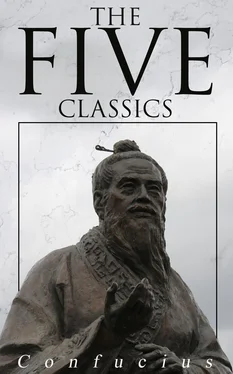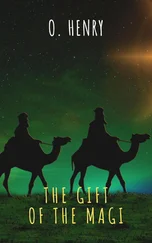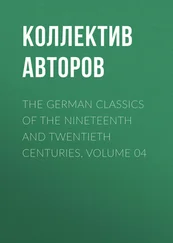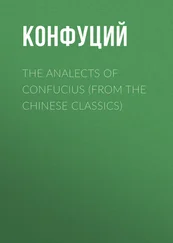Both of them, no doubt, were familiar with the practice of divination which had prevailed in China for more than a thousand years, and would copy closely its methods and style. They were not divining themselves, but their words became oracles to subsequent ages, when men divined by the hexagrams, and sought by means of what was said under them to ascertain how it would be with them in the future, and learn whether they should persevere in or withdraw from the courses they were intending to pursue.
2. I will give an instance of the lessons which the lineal figures are made to teach, but before I do so, it will be necessary to relate what is said of their origin, and of the rules observed in studying and interpreting them. For information on these points we must have recourse to the Appendixes; and in reply to the question by whom and in what way the figures were formed, the third, of which we made use in the last chapter, supplies us with three different answers.
(i) The 11th paragraph of Section ii says:--
'Anciently, when the rule of all under heaven was in the hands of Pâo-hsî, looking up, he contemplated the brilliant forms exhibited in the sky; and looking down, he surveyed the patterns shown on the earth. He marked the ornamental appearances on birds and beasts, and the (different) suitabilities of the soil. Near at hand, in his own person, he found things for consideration, and the same at a distance, in things in general. On this he devised the eight lineal figures of three lines each, to exhibit fully the spirit-like and intelligent operations (in nature), and to classify the qualities of the myriads of things.'
Pâo-hsî is another name for Fû-hsî, the most ancient personage who is mentioned with any definiteness in Chinese history, while much that is fabulous is current about him. His place in chronology begins in B.C. 3322, 5203 years ago. He appears in this paragraph as the deviser of the eight kwâ or trigrams. The processes by which he was led to form them, and the purposes which he intended them to serve, are described, but in vague and general terms that do not satisfy our curiosity. The eight figures, however, were  ,
,  ,
,  ,
,  ,
,  ,
,  ,
,  , and
, and  ; called kh ien, tui, lî, k ăn, sun, khân, kăn, and khwăn; and representing heaven or the sky; water, especially a collection of water as in a marsh or lake; fire, the sun, lightning; thunder; wind and wood; water, especially as in rain, the clouds, springs, streams in defiles, and the moon; a hill or mountain; and the earth. To each of these figures is assigned a certain attribute or quality which should be suggested by the natural object it symbolises; but on those attributes we need not enter at present.
; called kh ien, tui, lî, k ăn, sun, khân, kăn, and khwăn; and representing heaven or the sky; water, especially a collection of water as in a marsh or lake; fire, the sun, lightning; thunder; wind and wood; water, especially as in rain, the clouds, springs, streams in defiles, and the moon; a hill or mountain; and the earth. To each of these figures is assigned a certain attribute or quality which should be suggested by the natural object it symbolises; but on those attributes we need not enter at present.
(ii) The 70th and 71st paragraphs of Section i give another account of the origin of the trigrams:--
'In (the system of) the Yî there is the Great Extreme, which produced the two Î (Elementary Forms). These two Forms produced the four Hsiang (Emblematic Symbols); which again produced the eight Kwâ (or Trigrams). The eight Kwâ served to determine the good and evil (issues of events), and from this determination there ensued the (prosecution of the) great business of life.'
The two elementary Forms, the four emblematic Symbols, and the eight Trigrams can all be exhibited with what may be deemed certainty. A whole line (  ) and a divided (
) and a divided (  ) were the two Î. These two lines placed over themselves, and each of them over the other, formed the four Hsiang:
) were the two Î. These two lines placed over themselves, and each of them over the other, formed the four Hsiang:  ;
;  ;
;  ;
;  . The same two lines placed successively over these Hsiang, formed the eight Kwâ, exhibited above.
. The same two lines placed successively over these Hsiang, formed the eight Kwâ, exhibited above.
Who will undertake to say what is meant by 'the Great Extreme' which produced the two elementary Forms? Nowhere else does the name occur in the old Confucian literature. I have no doubt myself that it found its way into this Appendix in the fifth (?or fourth) century B.C. from a Tâoist source. K û Hsî, in his 'Lessons on the Yî for the Young,' gives for it the figure of a circle,--thus,  ; observing that he does so from the philosopher Kâu (A.D. 1017-1073) 2, and cautioning his readers against thinking that such a representation came from Fû-hsî himself. To me the circular symbol appears very unsuccessful. 'The Great Extreme,' it is said, 'divided and produced two lines,--a whole line and a divided line.' But I do not understand how this could be. Suppose it possible for the circle to unroll itself;--we shall have one long line,
; observing that he does so from the philosopher Kâu (A.D. 1017-1073) 2, and cautioning his readers against thinking that such a representation came from Fû-hsî himself. To me the circular symbol appears very unsuccessful. 'The Great Extreme,' it is said, 'divided and produced two lines,--a whole line and a divided line.' But I do not understand how this could be. Suppose it possible for the circle to unroll itself;--we shall have one long line,  . If this divide itself, we have two whole lines; and another division of one of them is necessary to give us the whole and the divided lines of the lineal figures. The attempt to fashion the Great Extreme as a circle must be pronounced a failure.
. If this divide itself, we have two whole lines; and another division of one of them is necessary to give us the whole and the divided lines of the lineal figures. The attempt to fashion the Great Extreme as a circle must be pronounced a failure.
But when we start from the two lines as bases, the formation of all the diagrams by a repetition of the process indicated above is easy. The addition to each of the trigrams of each of the two fundamental lines produces 16 figures of four lines; dealt with in the same way, these produce 32 figures of five lines; and a similar operation with these produces the 64 hexagrams, each of which forms the subject of an essay in the text of the Yî. The lines increase in an arithmetical progression whose common difference is 1, and the figures in a geometrical progression whose common ratio is 2. This is all the mystery in the formation of the lineal figures; this, I believe, was the process by which they were first formed; and it is hardly necessary to imagine them to have come from a sage like Fû-hsî. The endowments of an ordinary man were sufficient for such a work. It was possible even to shorten the operation by proceeding at once from the trigrams to the hexagrams, according to what we find in Section i, paragraph 2:--
'A strong and a weak line were manipulated together (till there were the 8 trigrams), and those 8 trigrams were added each to itself and to all the others (till the 64 hexagrams were formed).'
Читать дальше

 ,
,  ,
,  ,
,  ,
,  ,
,  ,
,  , and
, and  ; called kh ien, tui, lî, k ăn, sun, khân, kăn, and khwăn; and representing heaven or the sky; water, especially a collection of water as in a marsh or lake; fire, the sun, lightning; thunder; wind and wood; water, especially as in rain, the clouds, springs, streams in defiles, and the moon; a hill or mountain; and the earth. To each of these figures is assigned a certain attribute or quality which should be suggested by the natural object it symbolises; but on those attributes we need not enter at present.
; called kh ien, tui, lî, k ăn, sun, khân, kăn, and khwăn; and representing heaven or the sky; water, especially a collection of water as in a marsh or lake; fire, the sun, lightning; thunder; wind and wood; water, especially as in rain, the clouds, springs, streams in defiles, and the moon; a hill or mountain; and the earth. To each of these figures is assigned a certain attribute or quality which should be suggested by the natural object it symbolises; but on those attributes we need not enter at present. ) and a divided (
) and a divided (  ) were the two Î. These two lines placed over themselves, and each of them over the other, formed the four Hsiang:
) were the two Î. These two lines placed over themselves, and each of them over the other, formed the four Hsiang:  ;
;  ;
;  ;
;  . The same two lines placed successively over these Hsiang, formed the eight Kwâ, exhibited above.
. The same two lines placed successively over these Hsiang, formed the eight Kwâ, exhibited above. ; observing that he does so from the philosopher Kâu (A.D. 1017-1073) 2, and cautioning his readers against thinking that such a representation came from Fû-hsî himself. To me the circular symbol appears very unsuccessful. 'The Great Extreme,' it is said, 'divided and produced two lines,--a whole line and a divided line.' But I do not understand how this could be. Suppose it possible for the circle to unroll itself;--we shall have one long line,
; observing that he does so from the philosopher Kâu (A.D. 1017-1073) 2, and cautioning his readers against thinking that such a representation came from Fû-hsî himself. To me the circular symbol appears very unsuccessful. 'The Great Extreme,' it is said, 'divided and produced two lines,--a whole line and a divided line.' But I do not understand how this could be. Suppose it possible for the circle to unroll itself;--we shall have one long line, 










